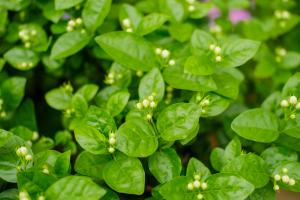Introduction
Coconut is a valuable crop that is grown in tropical regions worldwide. It is widely used for food, oil, and various other purposes. The high demand for coconut has led to the cultivation of the crop in numerous countries worldwide. One of the primary concerns of coconut growers is determining the number of coconut trees that can be planted per acre.
Factors Affecting the Number of Coconut Trees per Acre
Several factors affect the number of coconut trees that can be planted per acre. These factors include the variety of coconut, soil fertility, climate, planting density, and management practices.
Variety of Coconut
Different varieties of coconut have varying growth characteristics that affect their planting density. Some varieties, such as the dwarf coconut, can be planted at much higher densities compared to tall varieties. Dwarf varieties can be planted at around 200 to 300 trees per acre, while tall varieties require a planting density of around 70 to 100 trees per acre.
Soil Fertility
Soil fertility is critical for the growth and development of coconut trees. The soil should be well-draining and rich in nutrients. Soil tests should be performed to determine the nutrient content of the soil and the required amendments. In soils with poor fertility, the number of coconut trees per acre may be lower than in soils with high fertility.
Climate
Coconut trees thrive in areas with warm temperatures and high humidity. The ideal temperature range for coconut cultivation is between 20°C to 32°C. Coconut trees cannot tolerate frost or very cold temperatures. Coastal regions with moderate rainfall patterns are ideal for coconut cultivation. In regions with extreme weather patterns, the number of coconut trees per acre may be limited.
Planting Density
The planting density of coconut trees significantly affects the number of trees planted per acre. Coconut trees can be planted in a rectangular or triangular pattern. In a rectangular pattern, the trees are planted in straight lines with equal distances between the trees. In a triangular pattern, the trees are planted in a zigzag pattern, with each tree placed at equal distances from six neighboring trees. The triangular pattern provides better space utilization than the rectangular pattern, allowing for higher planting densities.
Management Practices
Good management practices are critical for the growth and development of coconut trees. These practices include irrigation, fertilization, and pest control. Proper fertilization and irrigation can increase coconut yield, while pest control measures can prevent crop losses. Good management practices can lead to an increase in the number of coconut trees planted per acre.
Conclusion
The number of coconut trees planted per acre depends on several factors, including the variety of coconut, soil fertility, climate, planting density, and management practices. Good management practices coupled with suitable planting density, soil fertility, and climate can result in increased coconut yields per acre. Farmers should consider these factors when deciding on the number of coconut trees to plant per acre.

 how many times do yo...
how many times do yo... how many planted tre...
how many planted tre... how many pine trees ...
how many pine trees ... how many pecan trees...
how many pecan trees... how many plants comp...
how many plants comp... how many plants can ...
how many plants can ... how many plants and ...
how many plants and ... how many pepper plan...
how many pepper plan...
































